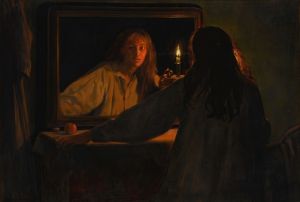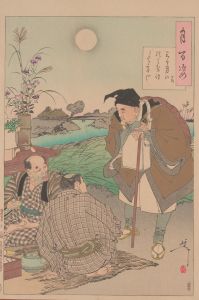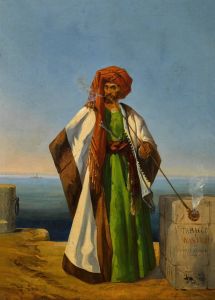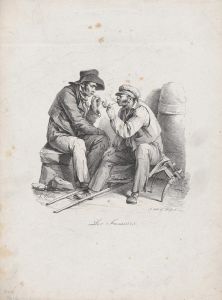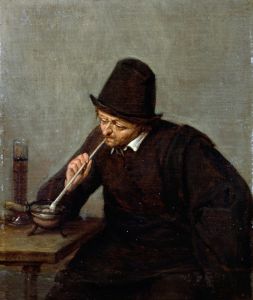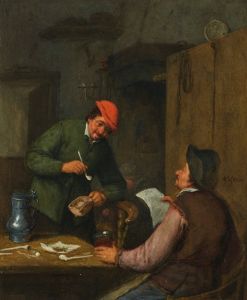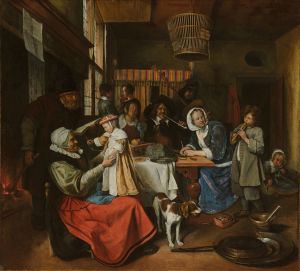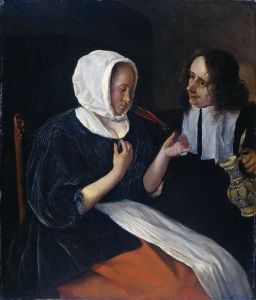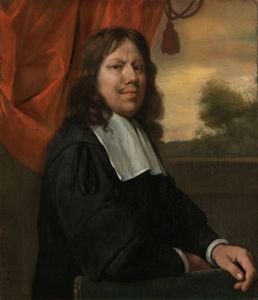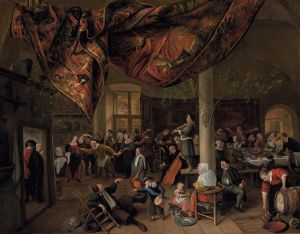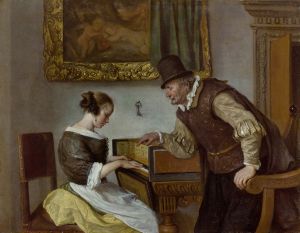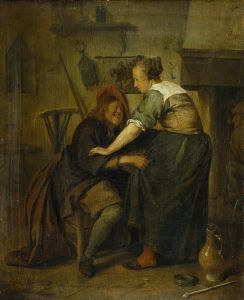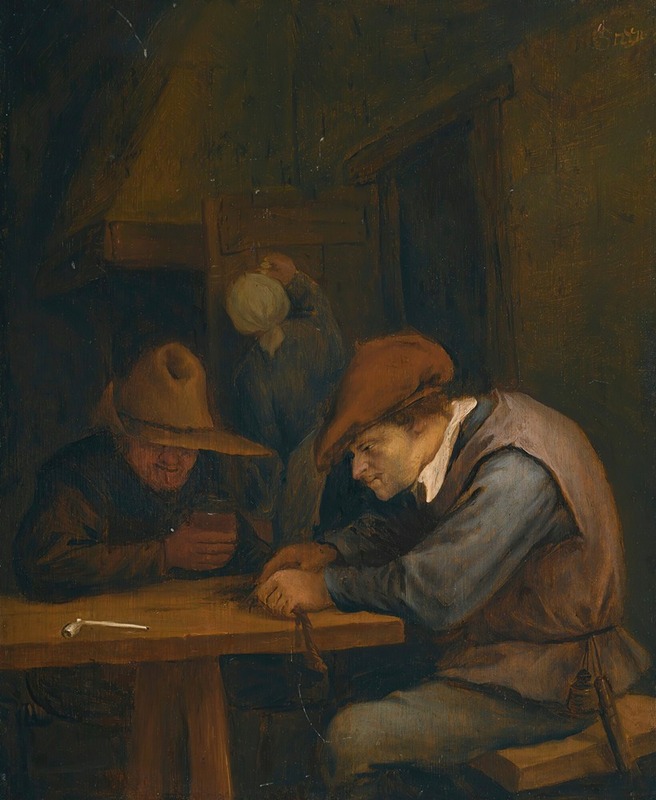
Peasants drinking and cutting tobacco in an inn
A hand-painted replica of Jan Steen’s masterpiece Peasants drinking and cutting tobacco in an inn, meticulously crafted by professional artists to capture the true essence of the original. Each piece is created with museum-quality canvas and rare mineral pigments, carefully painted by experienced artists with delicate brushstrokes and rich, layered colors to perfectly recreate the texture of the original artwork. Unlike machine-printed reproductions, this hand-painted version brings the painting to life, infused with the artist’s emotions and skill in every stroke. Whether for personal collection or home decoration, it instantly elevates the artistic atmosphere of any space.
Jan Steen, a prominent Dutch Golden Age painter, is well-known for his lively and often humorous depictions of 17th-century Dutch life. One of his notable works is "Peasants Drinking and Cutting Tobacco in an Inn." This painting exemplifies Steen's ability to capture the vibrancy and complexity of everyday scenes with a keen eye for detail and a touch of humor.
"Peasants Drinking and Cutting Tobacco in an Inn" is a genre painting, a style that Steen frequently employed to portray scenes from daily life. The painting depicts a group of peasants gathered in an inn, engaging in activities such as drinking and cutting tobacco. This setting is typical of Steen's work, as he often chose to illustrate the social interactions and leisurely pursuits of the lower and middle classes in Dutch society.
The composition of the painting is dynamic, with figures arranged in a way that guides the viewer's eye throughout the scene. Steen's use of color and light adds to the lively atmosphere, highlighting the expressions and actions of the characters. The warm tones and intricate details draw attention to the various elements within the inn, from the rustic furniture to the clothing of the peasants.
Steen's paintings are renowned for their narrative quality, and "Peasants Drinking and Cutting Tobacco in an Inn" is no exception. Each character in the painting seems to have a story, and their interactions suggest a sense of camaraderie and shared experience. The depiction of tobacco cutting, a common activity in the 17th century, adds an element of authenticity to the scene, reflecting the customs and habits of the time.
Jan Steen was known for infusing his works with humor and moral lessons, often using satire to comment on human behavior. In this painting, the jovial atmosphere and the somewhat chaotic arrangement of figures may suggest a lighthearted critique of indulgence and social merriment. Steen's ability to balance humor with realism is a hallmark of his style, making his works both entertaining and thought-provoking.
The painting also reflects the broader context of the Dutch Golden Age, a period marked by economic prosperity, cultural richness, and a flourishing art scene. Genre paintings like this one were popular among the Dutch middle class, who appreciated the depictions of familiar scenes and the moral messages they often conveyed. Steen's work provides insight into the social dynamics and cultural values of the time, capturing the essence of Dutch life with both wit and precision.
"Peasants Drinking and Cutting Tobacco in an Inn" is a testament to Jan Steen's skill as a storyteller and observer of human nature. Through his masterful use of composition, color, and narrative, Steen invites viewers to step into a moment of 17th-century life, offering a glimpse into the everyday experiences and social interactions of the Dutch people. His ability to blend humor with realism ensures that his paintings remain engaging and relevant, continuing to captivate audiences centuries after they were created.





